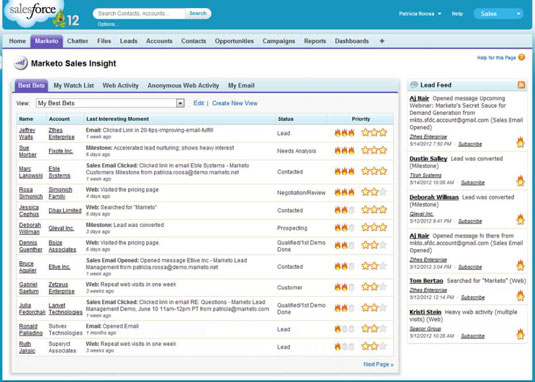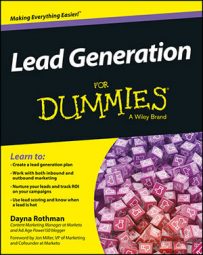You're ready to create your lead scoring model after you've thought carefully about scoring and how to best apply it to your own lead database. At this stage, you go through all of your implicit and explicit scoring criteria and determine how important each action or trait is to you and your business. Every business will be different. There is no right or wrong answer here, so score away!
Setting up your scoring matrix
Peruse the following examples of scoring explicit and implicit behaviors, and then see how to put it all together. Note how each example divides the scoring in terms of critical, important, influencing, and negatives. The assigned score value is based on how important each criterion is to you.
Have a look at this example of explicit demographic scoring.
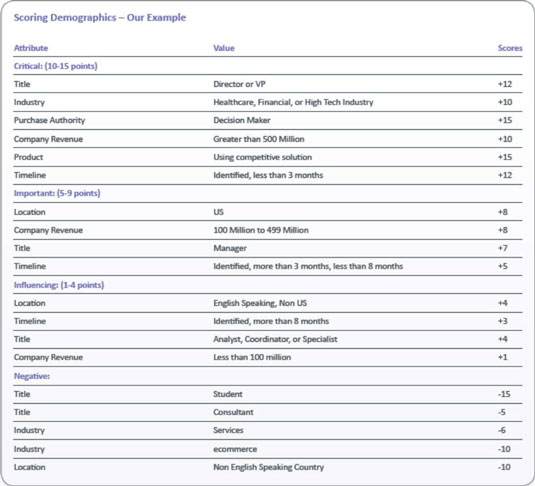
And here's an example of implicit behavior scoring, based on buying intent:
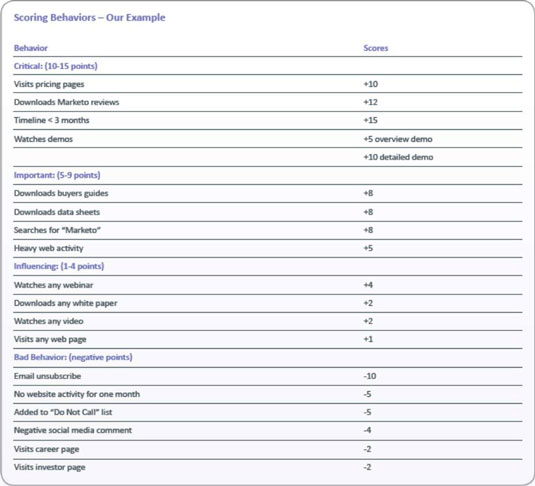
Next, take your chart for implicit and explicit scoring and create a matrix to determine when leads should be sent to sales.
In the following image, you can see an example of a scoring matrix based on behavioral and demographic scoring. Use a similar chart to assign leads to sales.
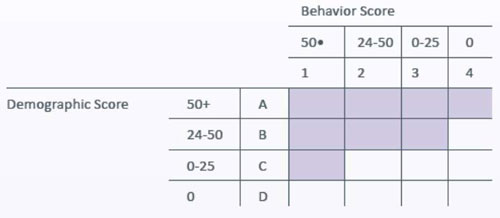
Prioritizing sales time
After you determine when a lead is sent to sales, it's important that sales understands what the score means and how "hot" that lead is. Consider creating a visual grading system to determine warm, hot, and super-hot leads so sales is aware of which ones to prioritize.
You can build these capabilities into your CRM or use sales information software to determine urgency. Your sales teams also should understand how the lead was created and any interesting moments that a lead may have had — for example, attending a particularly interesting webinar.
The following image (using Marketo Sales Insight software) shows a dashboard, which integrates into Salesforce. The application shows the lead name, the account, the last interesting moment, lead status, and priority. The flames indicate urgency, and the stars indicate lead quality:
